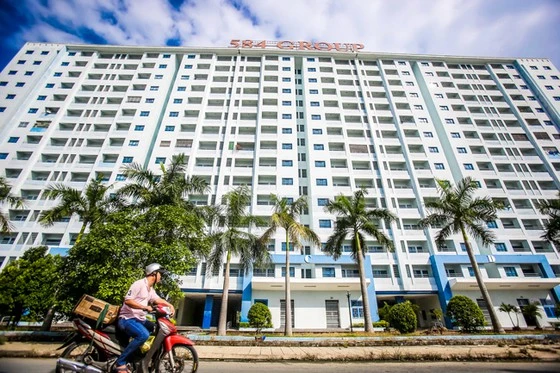
Therefore, to resolve the housing need of the people is an urgent issue, and also to ensure social security and sustainable development. However, this cannot easily be implemented in urban areas where price of real estate is exorbitant.
Currently, about 476,000 households have no home of their own or are living with relatives, accounting for nearly one fourth of total number of households. More than 20,000 households are living on or along the canals and 35,000 households are staying in old apartments that need renovation or upgrading.
These households have need to buy an affordable commercial house (NoTM: 1-2-bedroom apartment for about 1 billion) or a social house (NoXH: social house) on an instalment basis for a 15-year term, or be able to rent a cheaper house. In order to solve their housing need, at first, several housing projects in satellite towns need to be developed urgently.
Developing affordable housing
Recently, Ho Chi Minh City is working at developing affordable housing in satellite towns, such as Phu My Hung, Him Lam New Urban Area, Dragon City, Nam Long, Thu Thiem, Hiep Phuoc Seaport area, and Tay Bac. In the last three years, the City has set up many projects in the eastern urban area, Can Gio urban area and is also in the process of developing the Binh Quoi-Thanh Da urban area.
Developing and providing more housing in satellite areas of the City with all urban amenities and services for commerce, manufacturing and business opportunities is a very functional model. Accordingly, areas of high-class commercial houses for high-income people can merge with affordable apartments and social houses for middle-income and low-income people in urban areas. This could create good conditions for people of all walks of life to live together and contribute to the socio-economic development of the City.
Another model for possible development is in large-scale residential zones. The area of each project would cover approximately 50 hectares in suburban districts. This is really the ideal model to build and develop affordable commercial houses and social houses with all public utilities and services for middle-income and low-income people currently living in urban areas.
Another model that has potential for development is upgrading old urban areas. Currently, the City has carried out this model in shabby urban areas, old apartment blocks and canal areas. Some are successful projects and have helped in relocating and resettling many households living on and along Nhieu Loc-Thi Nghe canal, Ben Nghe canal, Tau Hu-Ruot Ngua canal, and Tan Hoa-Lo Gom canal. This successful model is really a practical lesson that needs to be considered and applied in the future.
The goal of the social housing model is to ensure social security. Therefore, social houses are continuously being developed to give ten beneficiaries good opportunities for housing in accordance with Housing Law.
Models like office & hotel (officetel), serviced apartments, condo & hotel (condotel) and shop houses should be developed at the Center of the City. While models for the rural population should be developed in ways more suitable for rural areas with convenient connection of transport and such facilities for commuting conveniently with urban city areas.
Last but not least, an important model is the development of new urban areas and large-scale residential areas in provinces bordering Ho Chi Minh City. Over the past 20 years, many provinces have rapidly become urbanized with much industrial development, such as Binh Duong, Long An, Ba Ria-Vung Tau and Dong Nai. Many provinces bordering the City have actually set up their own satellite towns, like in the suburbs of Ho Chi Minh City. It contributes to restructuring the whole region and simultaneously decreasing pressure from influx of immigrants into the City.
The model that is rapidly being developed recently are small and medium-sized housing. A positive side of this model is that it has contributed to solving the housing problems for all City people whose income is still low and who are living in difficult conditions.
The negative side of this model could lead to slum-like development, low-rise houses, deficient and inefficient infrastructure and improper land use. This will negatively influence the living environment and not conform to proper urban development planning. Today, this model is not suitable anymore, therefore, it should only be adopted in some areas for a transitional period only.
Allowing households and individuals to build their own houses for living or rent accounted for 61.7% of construction in 2018. This contributed to changing the appearance of the urban area. However, some problems have occurred in the City, such as unauthorized construction of houses, many residential areas having not adequate infrastructure, and houses built with no proper planning that look like shacks and are very dingy.
Apparently, households and individuals are letting out their housing areas or rooms on rent, which can be used to accommodate students, factory workers, and immigrants. However, such housing areas and rooms are of low quality and unsafe in event of fire, security, utilities, and various other daily services.




















